Time: 10:30AM – 3:00PM
Location: Eleven Mile Canyon
South Platte River 06/10/2025 Photo Album
With Ireland and jet lag in the rearview mirror, I was anxious to return to Colorado waters. Run off was in full swing, so my choices were limited to tailwaters or lakes. I checked the flows on the South Platte River at Lake George, and I learned they were in the 88 CFS range, and my choice became a no brainer. I love Eleven Mile Canyon, and flows in that range were a bit low but well within my desired range. Air temperatures were projected in the upper seventies, and that reinforced my desire to visit the canyon tailwater.
I arrived at my chosen pullout by 10AM, and as I geared up at the tailgate of my car, another angler ambled by on his way to fish the section that I chose. This irked me a bit, but it was open water, and he got there first. I wore only my fishing shirt and stuffed my raincoat in my backpack. My rod choice was my old Sage four weight. I was in a position to begin casting by 10:30AM, and my line displayed a size 14 peacock body hippie stomper and a beadhead hares ear nymph. In the early going I managed a pair of relatively small brown trout, and the hares ear accounted for both; however, spots that looked very attractive failed to produce. The hippie stomper was attracting attention in the form of looks and refusals, so I concluded that the fish were looking toward the surface for their meals.
I removed the long dropper leader and the hares ear, and I replaced them with a one foot tippet with a size 14 olive-brown body deer hair caddis. Cha-ching. This pairing clicked, and I moved the fish count from two to ten before I broke for lunch at noon. Credit goes to Max of Charlies Fly Box who posted an Instagram video that recommended caddis in the riffles for fast action. His advice was accurate.
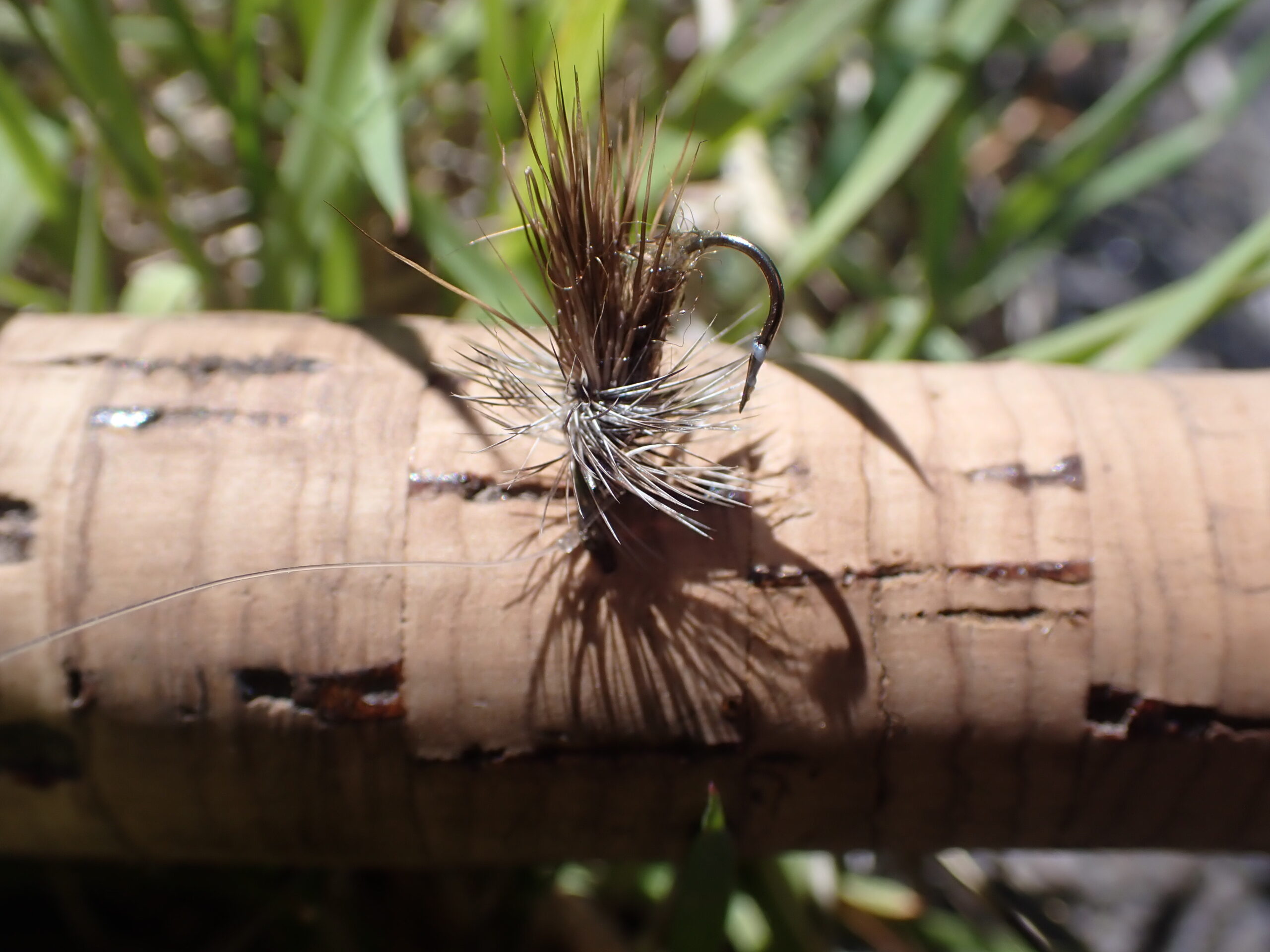 Olive-Brown Deer Hair Caddis on Its Nose
Olive-Brown Deer Hair Caddis on Its Nose
After lunch I continued my advancement through pocket water and riffles, and I increased the fish count to fourteen by 1:00PM. By now the sun was bright and the air temperature was in the upper seventies, and it seemed that these conditions placed the trout in a state of lethargy. The double dry suddenly failed to attract interest, so after a long dry spell, I returned to the dry/dropper methodology. I spotted one solitary golden stonefly, so I chose a tan body mini-chubby Chernboyl as my top fly. Beneath it I brought back the hares ear, and then I added a second nymph in the form of a salvation nymph. The length of the leader from mini chubby to salvatoin was around four feet.
I cast to all the likely spots, but it was as if the river was a victim of a recent fish kill. I removed the salvation and replaced it with an olive perdigon. After an enormous amount of casting and moving, I managed to land two nice rainbow trout in the final two hours. One bow snagged the hares ear, and the other clamped down on the olive perdigon.
On the day I landed four rainbow trout with one chunky specimen approximating thirteen inches in length. A brown trout stretched the tape to thirteen as well, and the other rainbows were around twelve inches in length. The remainder of the catch were less than a foot long.
While both dry flies were working, the deer hair caddis was preferred over the hippie stomper. I estimate that the ratio of caddis dry fly takes to hippie stomper takes was seven caddis for every three stompers. Moderate depth riffles and medium depth and long pockets were the most productive river structures. The big deep pools were a waste of casting energy.
A sixteen fish day, while most of the waterways were blown out with high water, was appreciated greatly. The last two hours were tough, but the morning action was fast and very entertaining. Perhaps another visit to the South Platte is in my future.
Fish Landed: 16
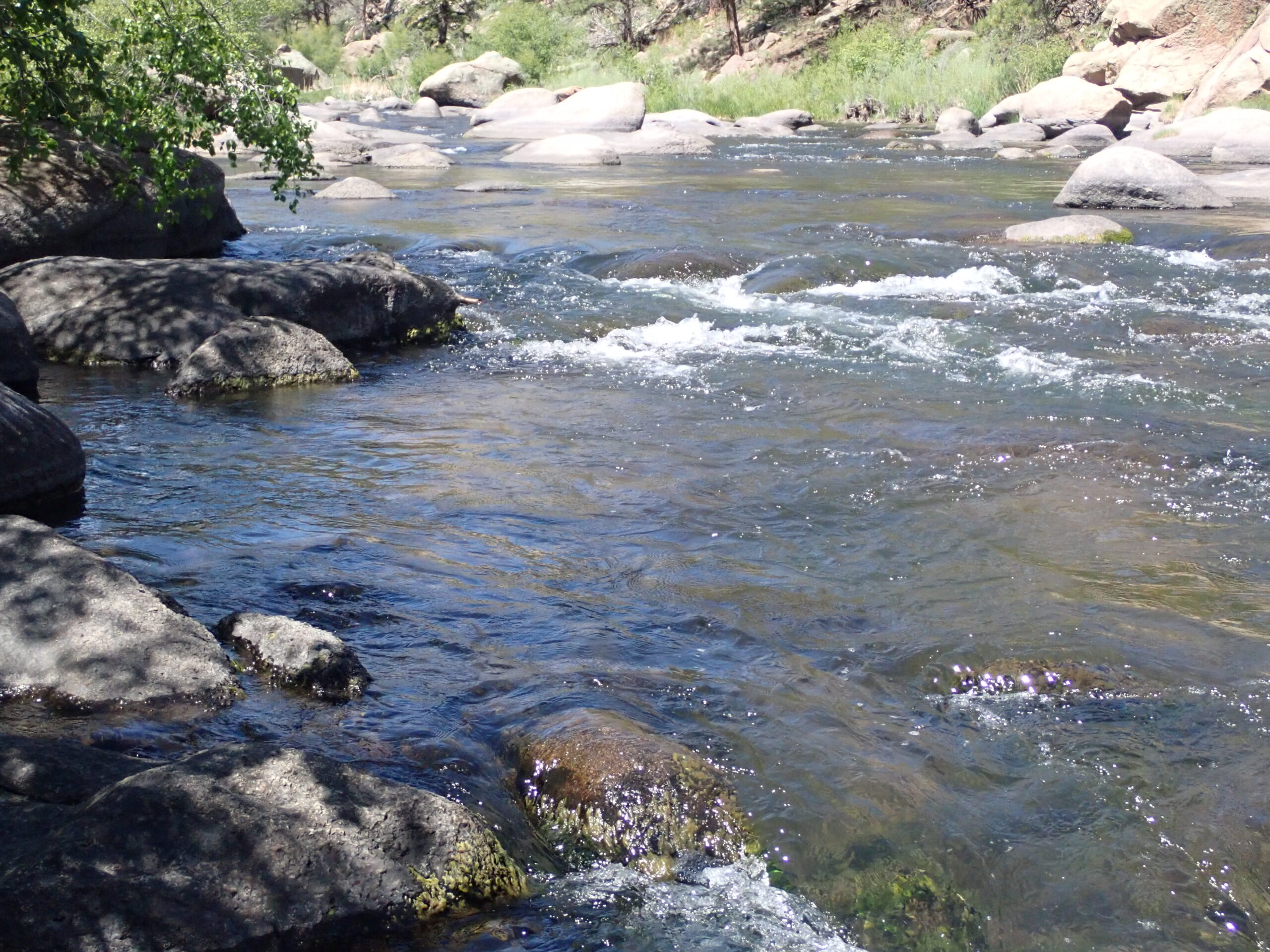 Prime Water
Prime Water Looking Up the Canyon
Looking Up the Canyon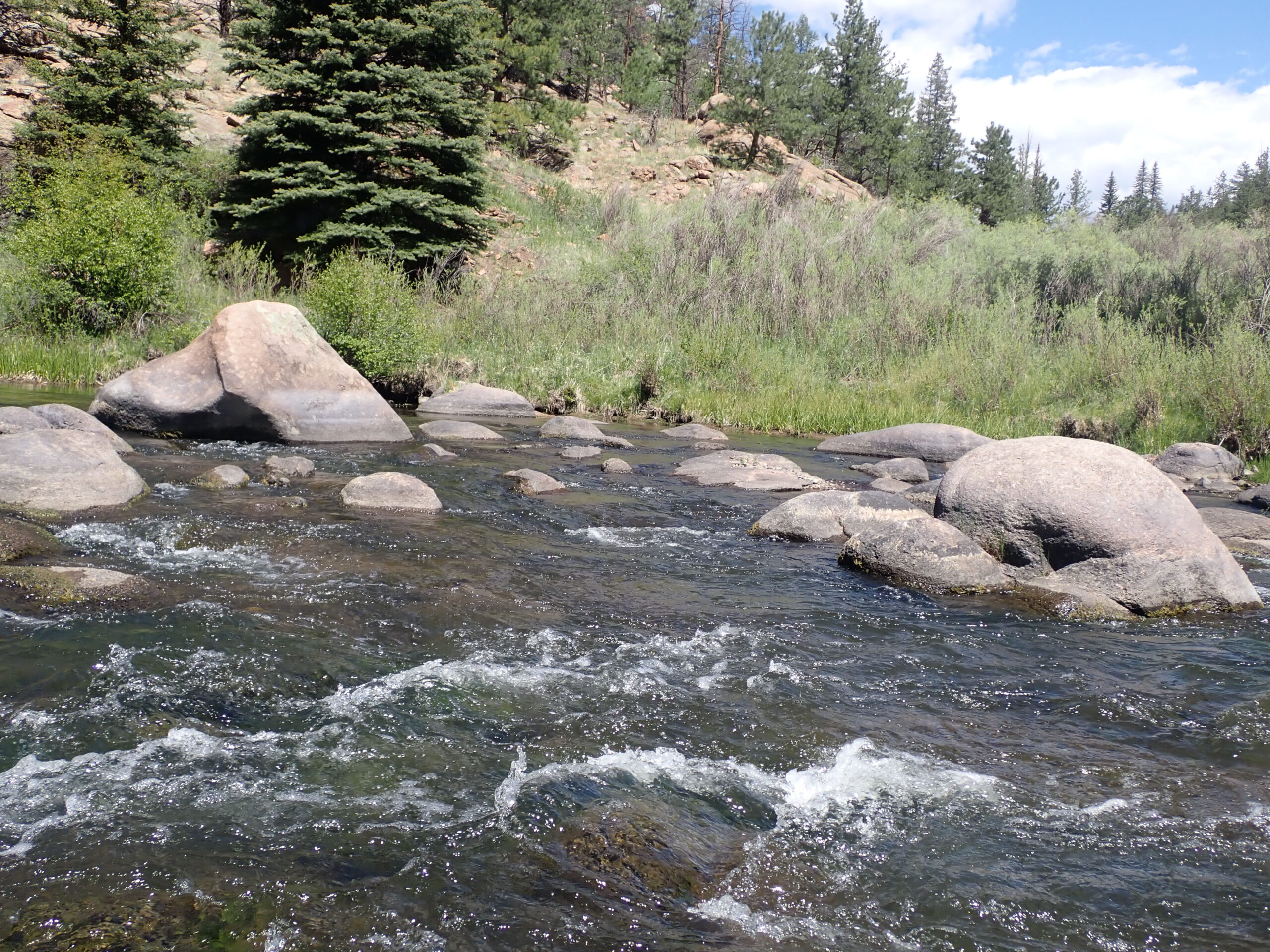 Pockets to Pick
Pockets to Pick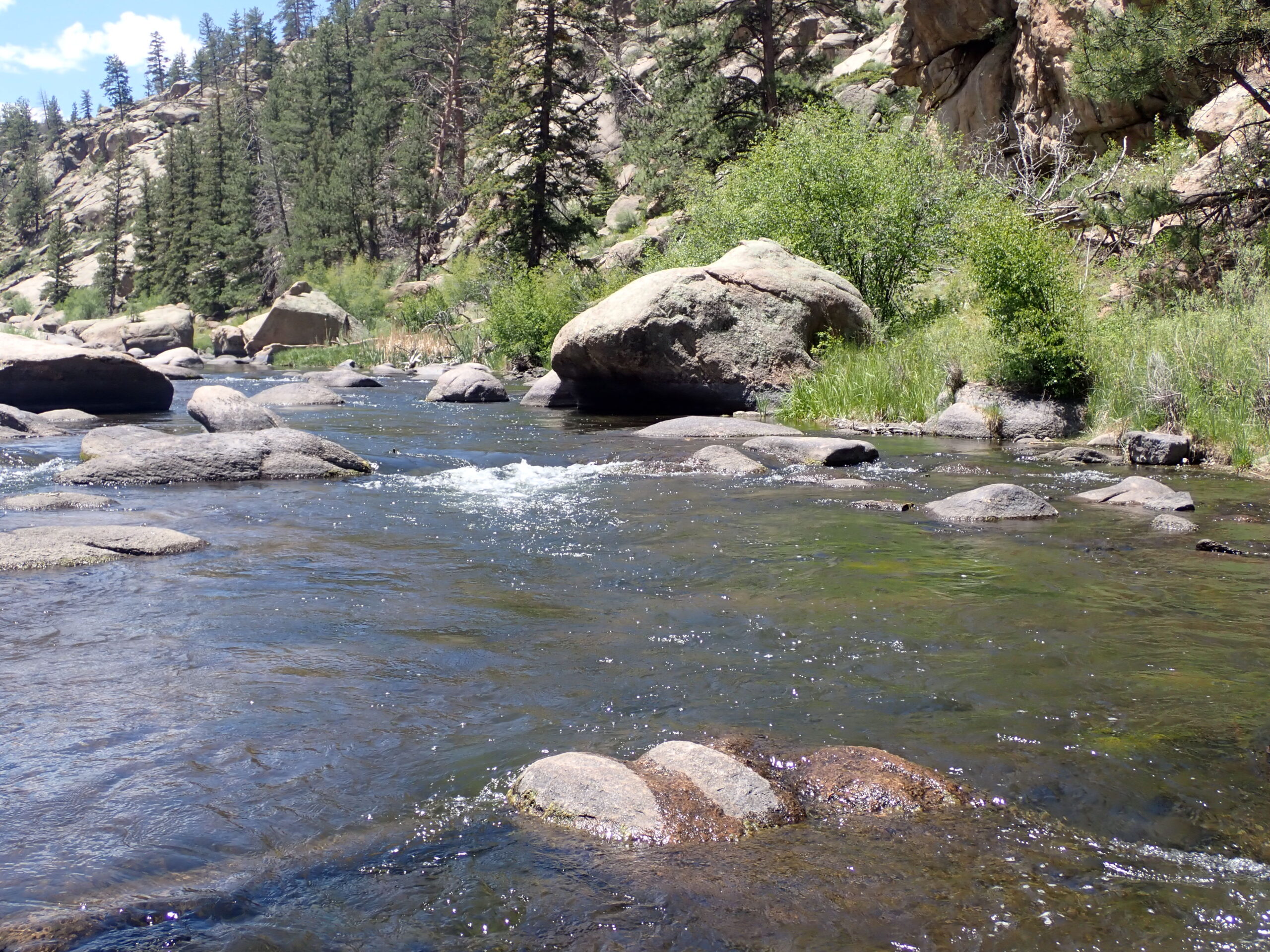 Promising
Promising Another Fine Rainbow
Another Fine Rainbow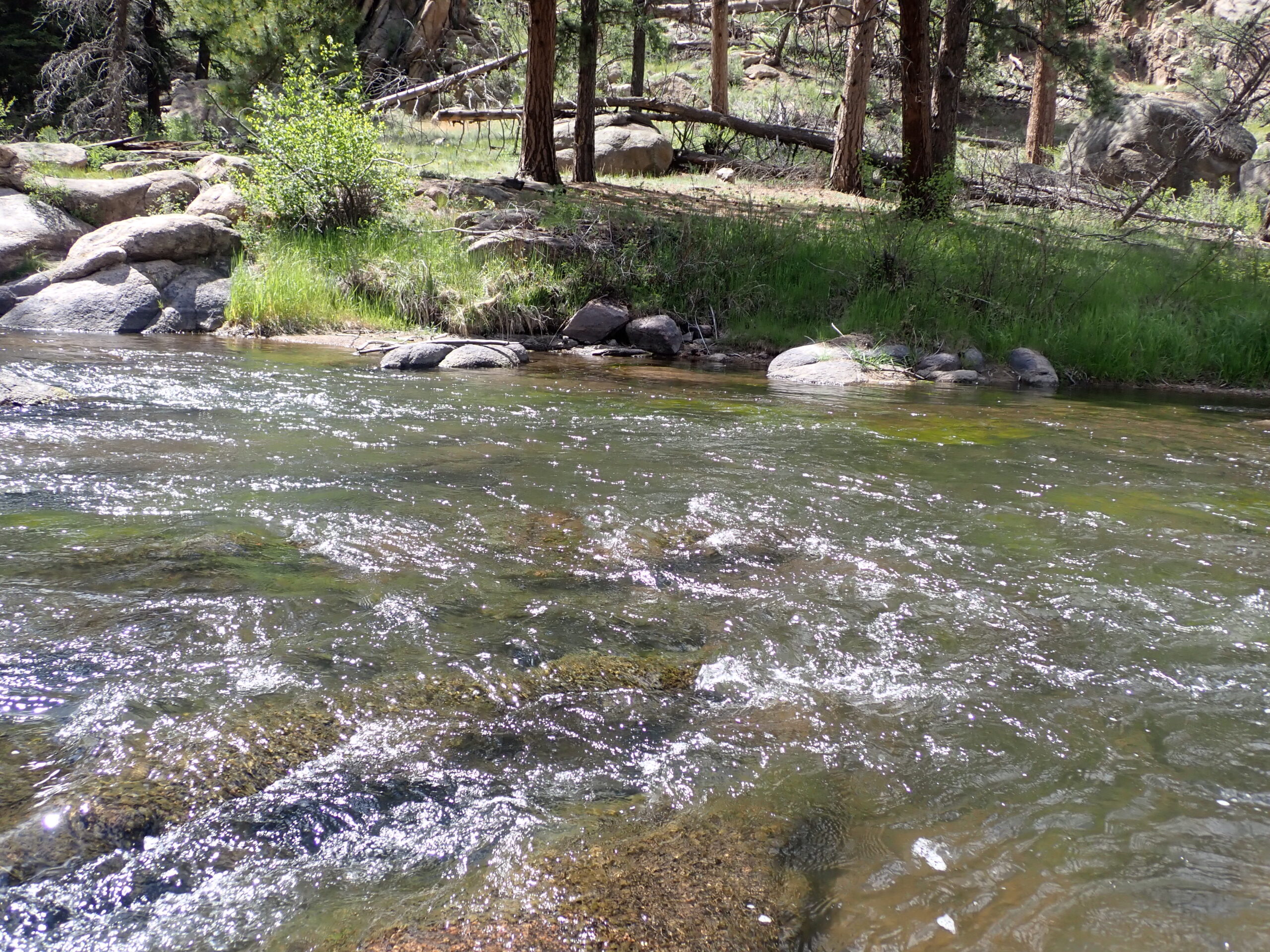 Run Near the Bank Delivered
Run Near the Bank Delivered